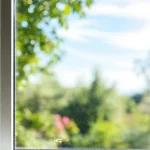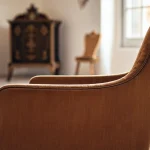Essential Maintenance Techniques for Historic Homes in the UK
Proper historic home maintenance UK begins with routine inspections to identify early signs of wear or damage. Regular upkeep can prevent serious deterioration, preserving the original structure. Moisture control and ventilation are crucial; excess damp can cause decay in traditional materials like timber and lime mortar. Ensuring adequate airflow reduces condensation and protects the historic fabric.
Using traditional materials compatible with the original construction is essential. For example, lime-based mortars should be used instead of modern cement, which can trap moisture and degrade older bricks and stone. This compatibility helps maintain both the aesthetic and structural integrity of heritage properties.
Also read : How Can We Redesign UK Homes to be More Sustainable?
Preservation techniques also include careful management of repairs. All interventions should respect the original craftsmanship and materials, avoiding shortcuts that might compromise longevity. Combining a hands-on maintenance routine with expert advice about traditional materials ensures historic homes in the UK retain their character and durability over time.
Understanding Legal and Heritage Protection Requirements
Safeguarding Your Historic Home Within the Legal Framework
Topic to read : How Can Sustainable Innovations Transform Housing in the UK?
Historic homes in the UK often come with heritage listing status, which places specific legal obligations on owners. These legal guidelines for historic homes differ depending on whether a property is Grade I, II*, or II listed. For example, higher grades involve more stringent controls over permissible changes to preserve architectural and historic interest.
Before any repairs or alterations, owners must secure formal permissions from local conservation officers or heritage bodies. Failure to comply can lead to legal penalties and may jeopardize the home’s protected status. Typical permissions cover everything from structural repairs to changes in windows, roofing, and even paint colours.
Owners are responsible for maintaining the property in accordance with preservation laws, ensuring interventions respect the building’s significance. This includes ongoing maintenance to prevent neglect, which is often a legal requirement under conservation regulations. Understanding these responsibilities, including applying for listed building consent when necessary, helps owners balance modern living needs with historic preservation.
In sum, adhering to these legal frameworks safeguards both the physical structure and its cultural heritage, making legal awareness a vital part of historic home maintenance UK.
Essential Maintenance Techniques for Historic Homes in the UK
Understanding the importance of routine inspections is crucial in historic home maintenance UK. Regular checks can detect issues early, preventing costly deterioration of valuable original features. Focus particularly on moisture ingress, as damp conditions can severely damage timber, plaster, and masonry. Effective moisture control through ventilation helps preserve the building’s fabric by reducing condensation and mould growth.
Using traditional materials aligned with the original construction is another cornerstone of proper preservation techniques. For example, lime-based mortars allow walls to breathe and accommodate movement, unlike modern cement which traps moisture and causes damage. Applying compatible materials ensures repairs are sympathetic, preventing further harm to historic elements.
Maintenance must also include careful management of repairs. Avoid hurried fixes using inappropriate modern products; instead, select methods that respect the craftsmanship and materials originally used. This combined approach of consistent upkeep, managing moisture, and employing suitable traditional materials forms the bedrock of sustainable historic home maintenance UK, keeping heritage properties healthy and authentic over time.
Essential Maintenance Techniques for Historic Homes in the UK
Routine inspection and upkeep are fundamental to effective historic home maintenance UK. Early identification of issues such as cracks, damp, or structural movement prevents costly deterioration of unique features. Inspections should focus on vulnerable areas like roofs, gutters, and timber frames to ensure ongoing protection from weather-related damage.
Using traditional materials is vital for maintaining the home’s structural and aesthetic integrity. For example, lime-based mortars remain the preferred choice due to their breathability, which allows moisture to evaporate naturally without trapping damp inside the walls. Modern cement can be detrimental by causing moisture accumulation and subsequent decay. Selecting materials compatible with the original construction avoids unintended damage and supports preservation techniques tailored to historic fabrics.
Controlling moisture through adequate ventilation safeguards delicate components like plaster and timber. Ventilation systems should balance airflow without causing excessive draughts, reducing condensation risks. Combining moisture management with consistent maintenance and authentic materials forms a comprehensive strategy for preserving historic UK homes effectively and sustainably.
Essential Maintenance Techniques for Historic Homes in the UK
A key element of historic home maintenance UK is establishing a routine inspection schedule. Regular checks uncover early signs of damage such as cracks, moisture ingress, or structural movement before they escalate. Focusing on vulnerable components like roofs, gutters, and timber frames helps prevent deterioration and maintains the building’s integrity.
The use of traditional materials remains central to effective preservation techniques. Lime-based mortars, for example, are preferred because they allow walls to breathe, preventing trapped moisture that accelerates decay. Modern, impermeable materials often cause damage by disrupting this natural balance. Applying materials compatible with the original construction secures the building’s structural and aesthetic value long term.
Managing moisture through adequate ventilation safeguards the fragile historic fabric. Balanced airflow reduces condensation, which can lead to mould formation and timber rot. Ventilation should be designed to avoid draughts while ensuring moisture does not accumulate within walls or roof voids. Combining regular inspections, traditional materials, and moisture control forms a holistic maintenance approach essential for preserving UK historic homes.
Essential Maintenance Techniques for Historic Homes in the UK
Routine inspection and upkeep form the backbone of effective historic home maintenance UK. Scheduled regular checks help detect early issues, such as cracks or moisture ingress, before they cause significant harm. Emphasis should be placed on vulnerable components—including roofs, gutters, and timber frames—to safeguard the building’s integrity over time.
The use of traditional materials is imperative for proper preservation. Materials like lime-based mortars and breathable plasters maintain structural compatibility and allow the building to “breathe,” preventing moisture entrapment that accelerates decay. Replacing original materials with modern, impermeable alternatives often causes long-term damage by disrupting natural moisture movement.
Managing moisture through effective ventilation also protects historic fabric from damp-related problems such as mould growth and timber rot. Ventilation must balance sufficient airflow with minimised draughts to reduce condensation without compromising comfort. Combining consistent inspections, preservation techniques, and traditional materials creates a comprehensive strategy for sustaining the character and durability of historic UK homes.
Recommended Materials and Conservation Practices
Selecting appropriate traditional building materials UK is vital for authentic and durable preservation. Lime-based mortars are prized for their breathability, allowing moisture to escape without trapping damp inside walls. This prevents decay and preserves the integrity of masonry. Breathable paints, similarly, offer protection while letting the structure “breathe,” avoiding the cracking and peeling common with modern impermeable coatings.
Avoiding modern cement or synthetic sealants is critical, as these materials often conflict with historic fabrics, causing accelerated damage. Conservation best practices stress using materials matched closely to the original construction, which maintains both aesthetic qualities and structural health.
Employing conservation methods that prioritise gradual, minimal intervention helps extend the lifespan of original features. Techniques such as repointing with lime mortar, using soft brushes for cleaning, and repairing rather than replacing woodwork ensure historic homes remain true to their heritage. Sustainable restoration not only safeguards the building but also supports environmental responsibility by utilising materials that age compatibly.
Ultimately, choosing the right materials and methods ensures that historic home maintenance UK respects the past, maintaining architectural character while enhancing durability for future generations.










